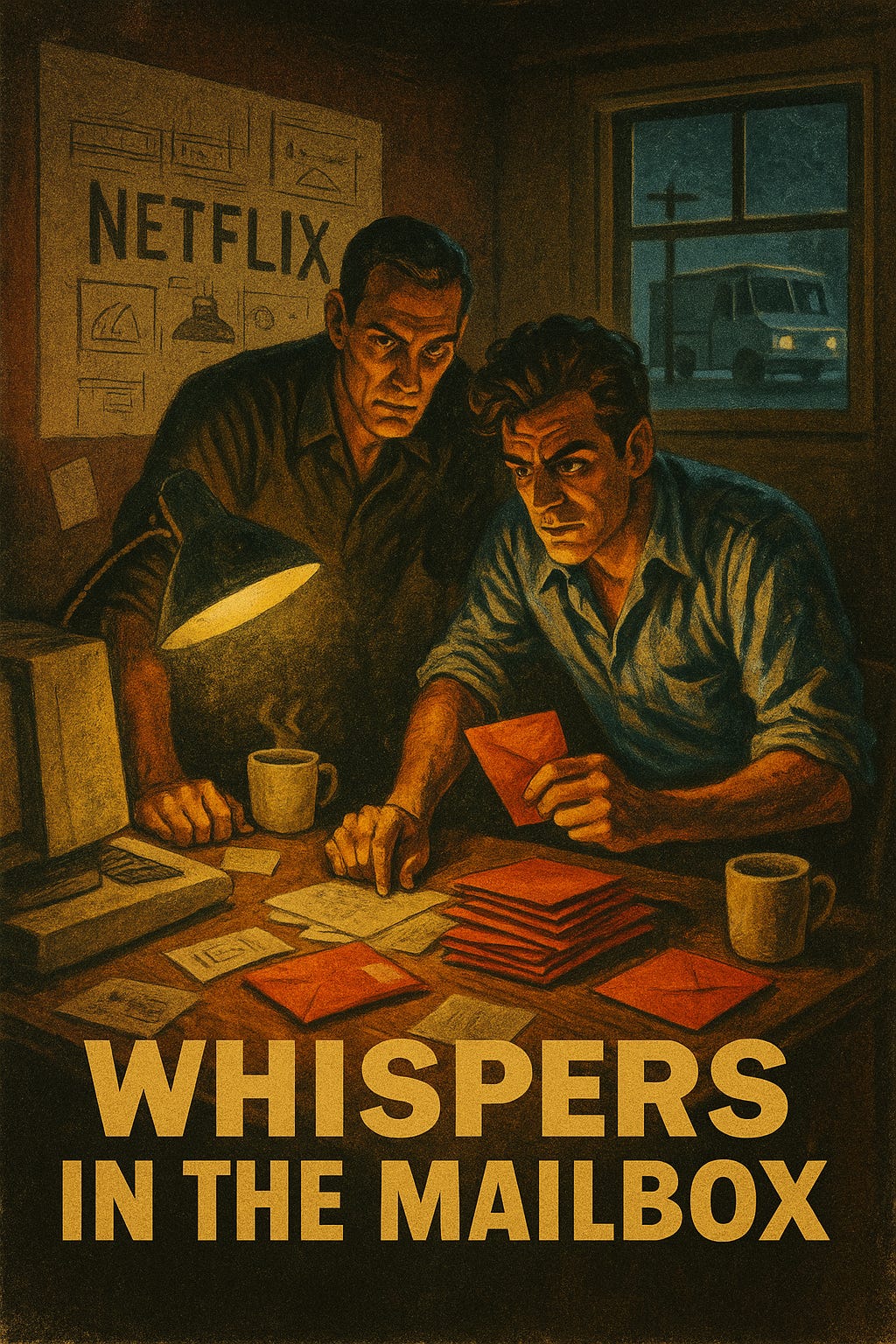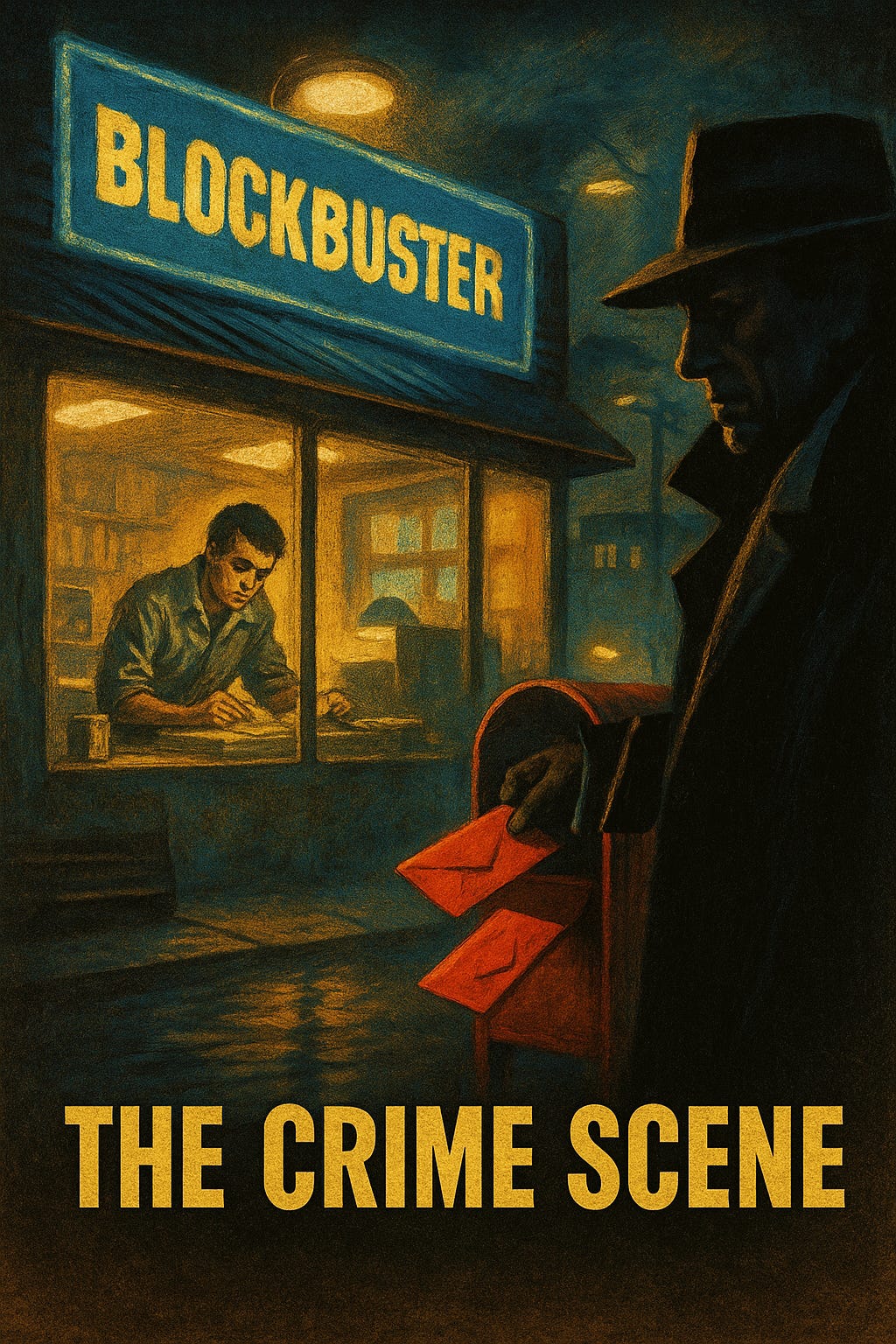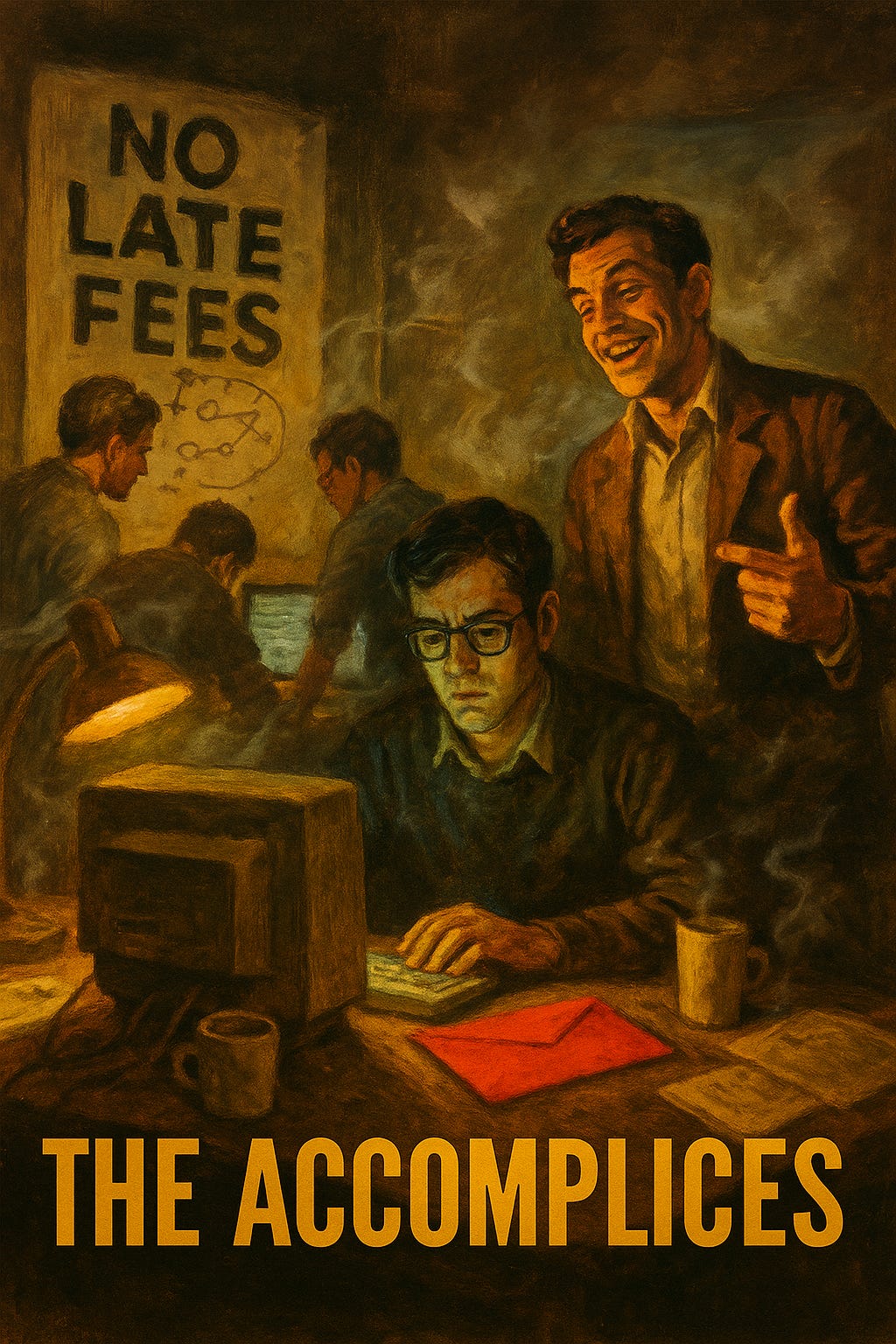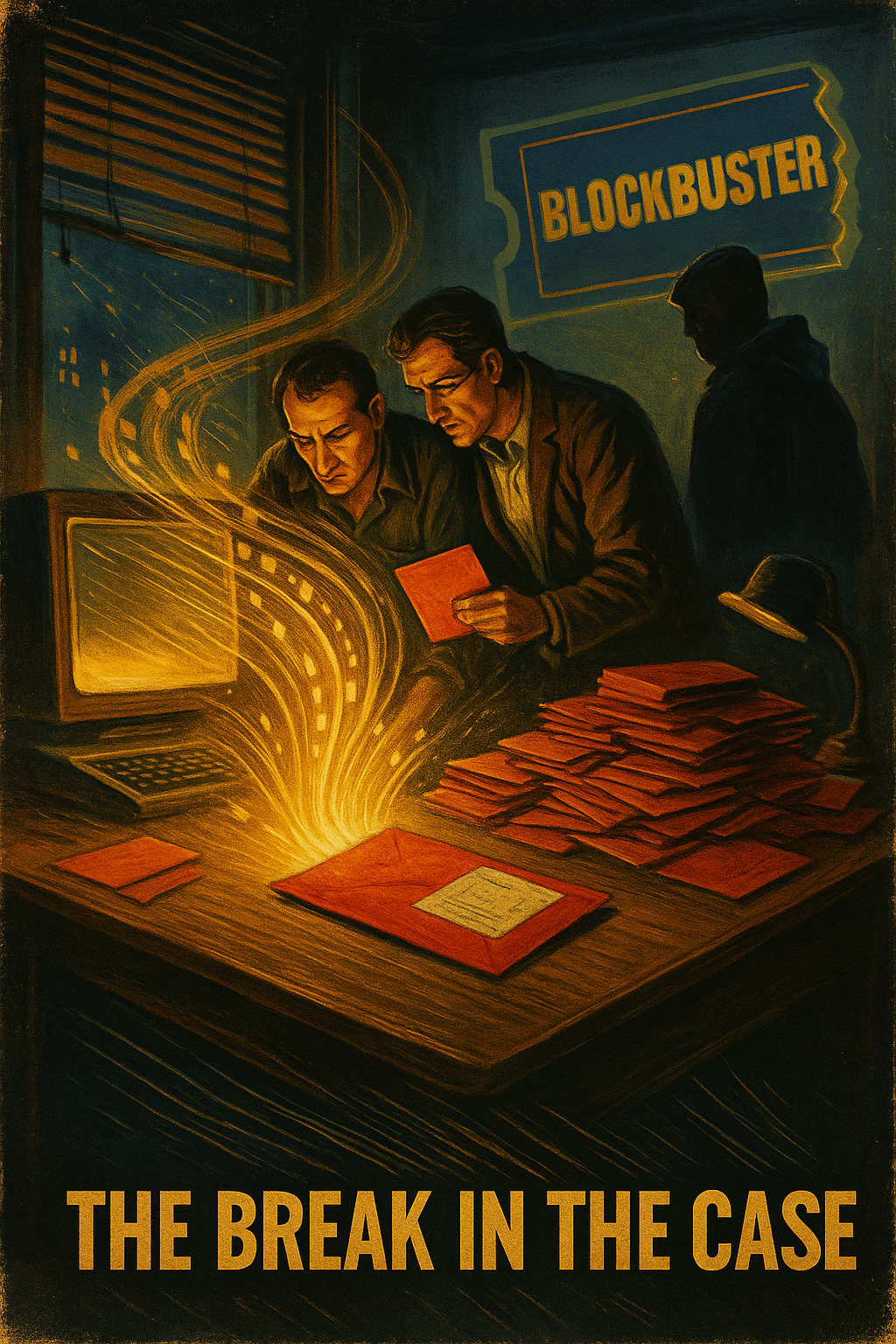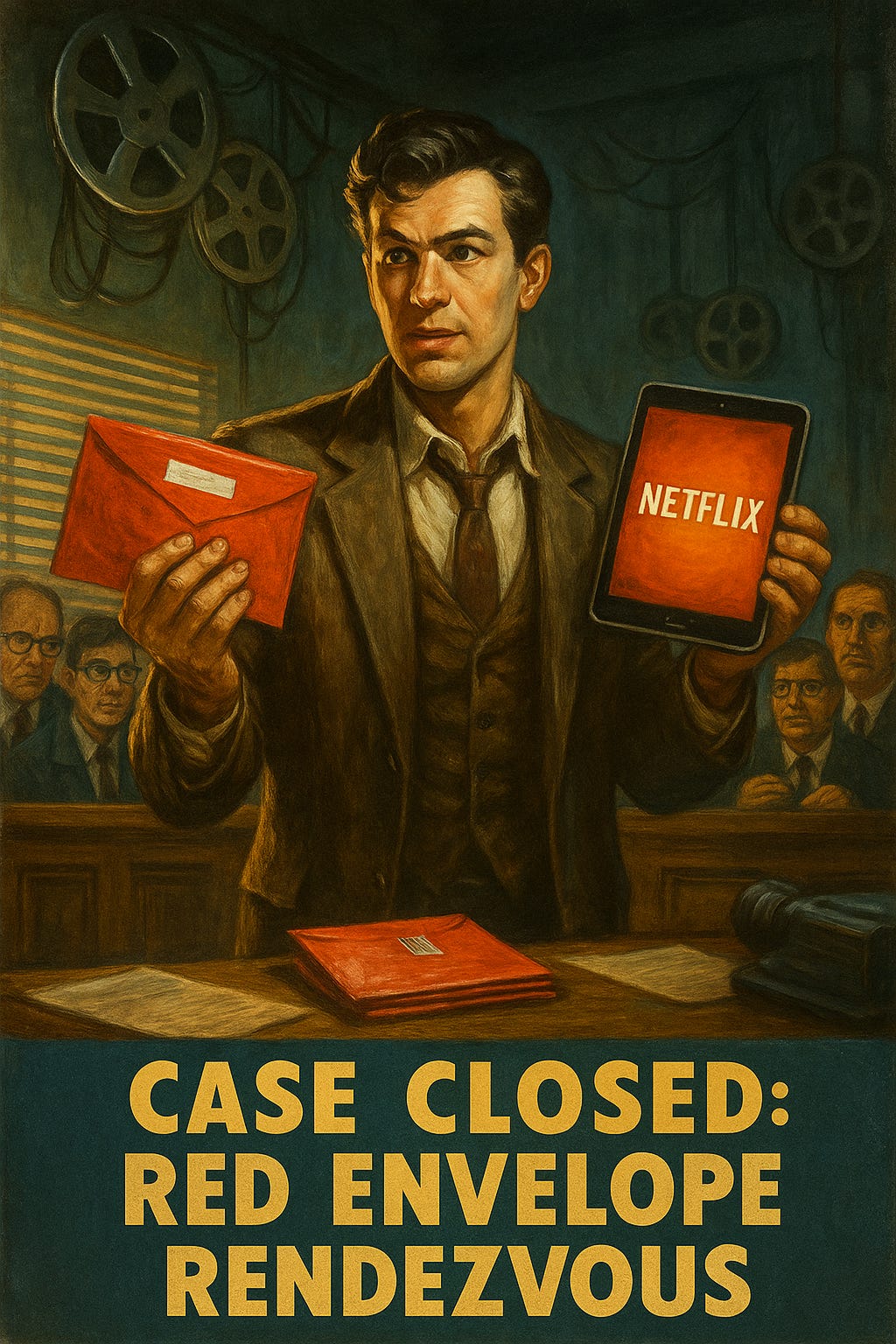Resistance Files: The Last Late Fee
Case File #004
Top of the Series: Resistance Files: The Unusual Suspects
Previous: Resistance Files: The Garage Affair
🎬 Resistance Files: Red Envelope Rendezvous
Case File #004 — Netflix
Mocked in the boardroom. Desired on every doorstep.
Whispers in the Mailbox
They said it was cute, a couple of tech guys mailing movies.
Red envelopes in a world turning digital. A joke with postage.
But every rebellion starts small: a whisper sealed in cellophane and dropped in a blue mailbox.
Scotts Valley, California.
Not exactly the scene of a cinematic revolution—just strip malls, bad coffee, and startup dreams running on fumes.
Reed Hastings paced like a man balancing logic and lunacy. A mathematician with a conscience, always running numbers on the back of a napkin and asking the kind of questions you can’t chart on a spreadsheet: What if convenience could feel like grace?
Across from him, Marc Randolph leaned back, that eternal salesman’s smirk curling at the edges. He didn’t see math; he saw movement, emotion, momentum. Hastings talked about models. Randolph talked about magic.
Together, they looked like a mismatched duo in a heist film: the quiet planner and the fast-talking con.
Their plan was simple. Mail movies. No stores. No late fees.
It wasn’t revolutionary. It was ridiculous.
But it had pulse.
Then came the meeting in Dallas, inside the Blockbuster boardroom filled with blue suits and colder smiles. Hastings pitched the partnership. Randolph watched, hands clasped, praying the suits would see the sparkle.
They didn’t.
“Cute idea,” one executive said, brushing imaginary dust from his cuff.
“But nobody wants to wait for a movie.”
The laughter followed them into the parking lot.
That was the night they realized something dangerous.
The world’s biggest video empire didn’t understand patience.
The Crime Scene
It was the new millennium, and the home screen still lived inside a box.
VHS was on life support, DVDs were the shiny new thing, and Friday nights meant driving to the temple of Blockbuster with its blue neon, stale popcorn, and guilt disguised as policy.
Late fees weren’t a glitch in the system. They were the system.
But in the shadows, the rebels in red kept licking stamps and sealing envelopes. They were running an underground economy of indulgence: film buffs, parents, insomniacs, all subscribing to the same quiet promise—no more penalties for pleasure.
Hastings handled the equations. Randolph handled the chaos.
Sometimes they fought. Sometimes they finished each other’s sentences.
When the servers went down, Hastings pulled all-nighters in silence.
When morale tanked, Randolph hit the phones, selling dreams through static.
They didn’t agree on how to build the future, only that they had to.
And that was enough.
The Suspects
Every file has its lineup.
This one reads like a gallery of blind giants.
Blockbuster: The rental king, drunk on its own late fees and blind to the cracks forming beneath the carpet.
Wall Street: Too allergic to patience to see profit in postage.
Cable Networks: Guarding prime time like it was sacred scripture, never noticing the congregation slipping away.
Different uniforms. Same fingerprints.
Dismiss the new. Defend the old.
The Accomplices
No caper this big runs solo.
Hastings and Randolph might have drawn the map, but it took a crew to crack the vault.
The engineers in hoodies who built the queue turned indecision into design.
The data whisperers taught code how to crave.
The subscribers treated the red envelope like ritual, not novelty.
They weren’t just customers. They were accomplices.
As Netflix grew, so did the tension.
Randolph, the romantic, missed the grit of the early days—the thrill of selling a dream no one believed in.
Hastings, the realist, saw a new horizon. The mailboxes were temporary. The future was silent, instant, inevitable.
One night, Randolph caught him staring at a blank monitor, nothing but code reflecting in his glasses.
“You ever think,” Randolph asked, “we’re building something that doesn’t need us anymore?”
Hastings didn’t answer. He didn’t have to.
The system was already learning.
Exhibit D: What Really Broke the Case? (Poll)
The tape’s rewound. The lights are dim. The question lingers like static on the reel.
What truly flipped the script?
👉 What really made Netflix unstoppable?
🎥 The no-late-fee promise
💌 The red envelope mystique
📊 The recommendation algorithm
📦 The subscription model
🌐 Streaming before anyone saw it coming
The Break in the Case
The whisper became a roar.
Broadband bloomed across America, quiet as dawn and just as inevitable.
While Blockbuster kept rearranging candy racks, Netflix made its move.
The mailboxes had done their work, and now came the invisible handoff.
The discs gave way to data.
The queue became a stream.
Randolph left around then. The heist was over for him. He had helped rob an empire but couldn’t stomach running one.
Hastings stayed behind, sharpening the edges. He didn’t deal in postage anymore. He dealt in bandwidth, algorithms, and prediction.
His dream had evolved. Maybe it had outgrown him.
And somewhere, in a suburban living room, a family clicked “Play” without thinking about the blood, caffeine, and code it took to make that moment possible.
The world had changed.
And no one sent thank-you notes.
🗞️ Next Week on Resistance Files
Case File 005 — “🎙️ Static on the Line ⚡”
The Verdict
By the time the curtain fell, Blockbuster’s blue glow was a ghost.
The aisles were empty. The drop slots sealed.
The neon signs hummed one last hymn before the power went out for good.
The red envelope became a relic, a love letter from a time when waiting was part of the pleasure.
Randolph walked away satisfied.
Hastings stayed, haunted.
One built the legend. The other built the system.
Netflix didn’t just change how we watched movies.
It changed what waiting meant.
That’s the cruel beauty of innovation.
It doesn’t ask permission.
It slips quietly through the mail slot,
and by the time you notice,
it’s already home.
Case closed.
Mocked in the boardroom. Desired on every doorstep.



